PHILLIPS— The Sandy River and Rangeley Lakes Railroad hosted Civil War reenactments Saturday for the third year since dedicating a day to just the event.
With smatterings of Maine participants, this year’s crew of Union and Rebel units mostly came from Massachusetts and Rhode Island.
Gabriel Cote, 16, of Rhode Island, was on his 10th year of Civil War reenactments and Andrew Watkins, also 16 and a fellow Rhode Islander, was participating for a second year. Both said they love doing reenactments because they offer opportunities to learn about the history of the battles and daily living for Union and Confederate soldiers.
Sam McMullin, 13, of Portland has been participating in reenactments for about five years and said most of the fun, aside from the opportunity to dress up and shoot replica guns, is the change of pace from normal life.

Families of the Confederate soldiers at the Sandy River Rangeley Lakes Railroad Civil War reenactment take to the train that Union soldiers arrived on in Phillips. Joe Charpentier/Sun Journal
“It’s fun to dress up, it’s fun to shoot at things, but it’s also fun in a historical sense,” McMullin said. “It’s fun if everything is accurate. Other people might not find that interesting, but a combination of (a lot of) things like acting and also shooting accurately and safely, keeps a certain accurateness in the reenactment.”
Sharon Barber, president of the railroad group, has been with the organization for six years and remembers when the group kept trying to squeeze in reenactments on the railroad’s home day. Competing with other programs, reenactments became popular enough to demand a day on their own on the last weekend in July.

Tom Bessey of Kingfield and Monica Huntoon of Madrid enjoy a Saturday out together at Sandy River Rangeley Lakes Railroad in Phillips. Joe Charpentier/Sun Journal
Barber said the reenactments are popular among visitors and reenactors and it is nice to see the passenger cars packed.
“We have a lot of fun with the reenactors and we usually gather up after the event, go over everything, talk about the next year,” Barber said. “Everybody has a lot of fun.”
Sandy River and Rangeley Lakes Railroad is on a historic right of way and operates a roundhouse built on the site of an original at the historic narrow gauge site. Barber said in its heyday, the railroad operated on 112 miles of track and had 20 locomotives and eight passenger cars. It was a busy stretch of tracks until business started falling off in the early 1920s and fell out of style during the Great Depression.
Send questions/comments to the editors.


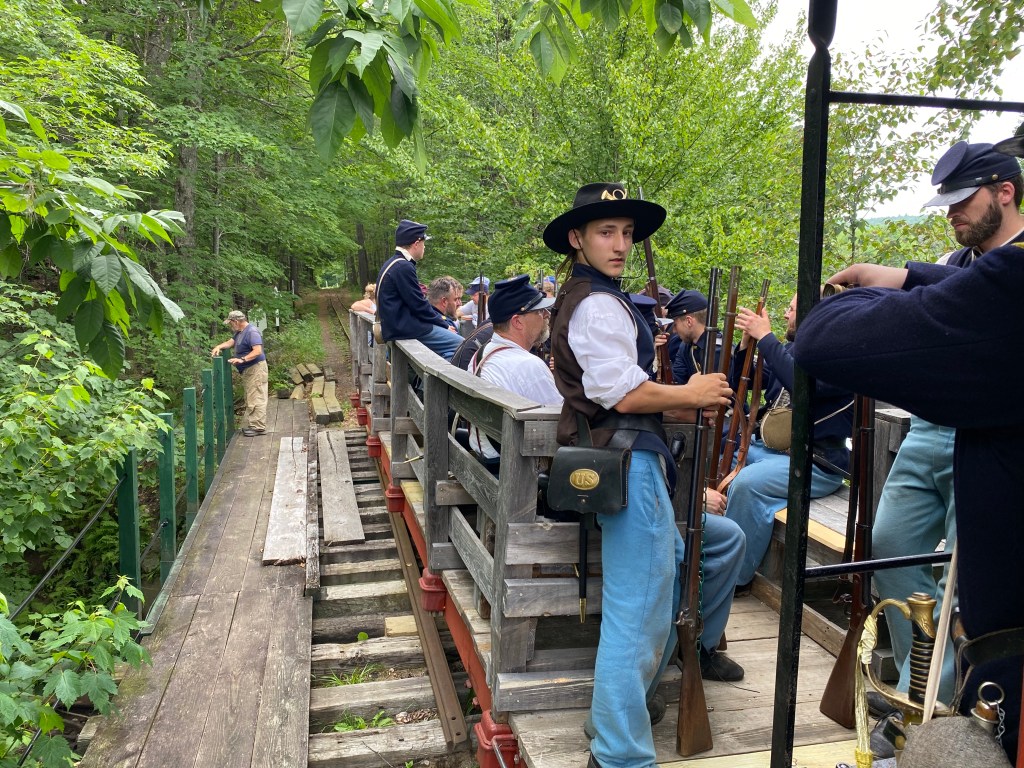
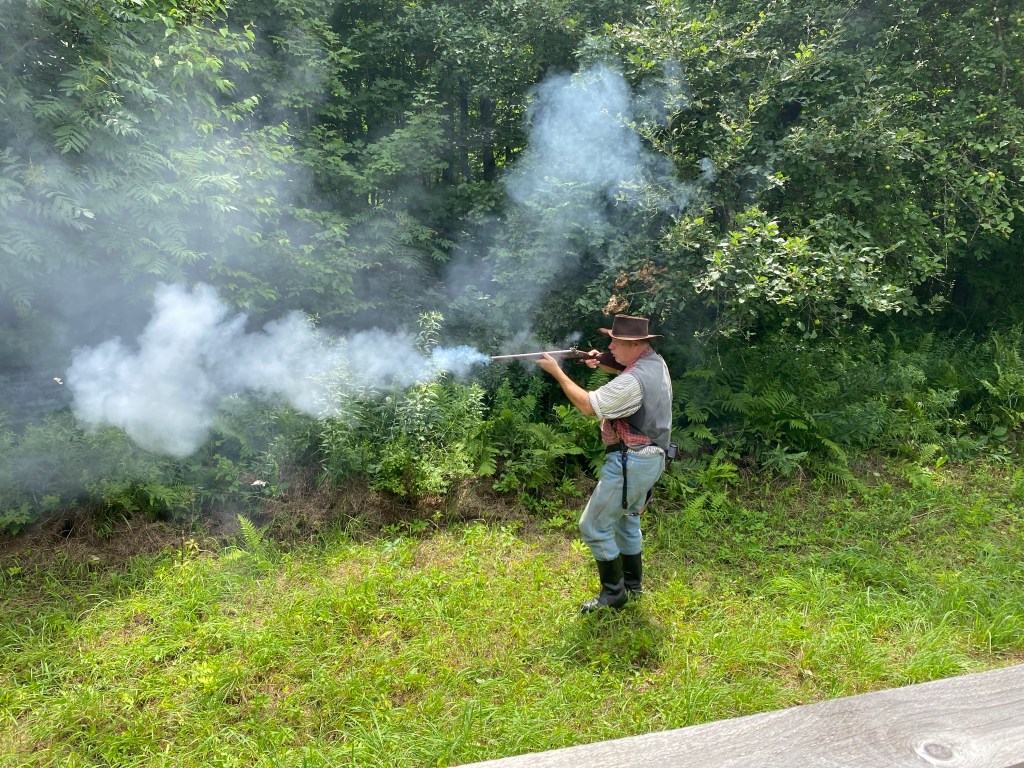
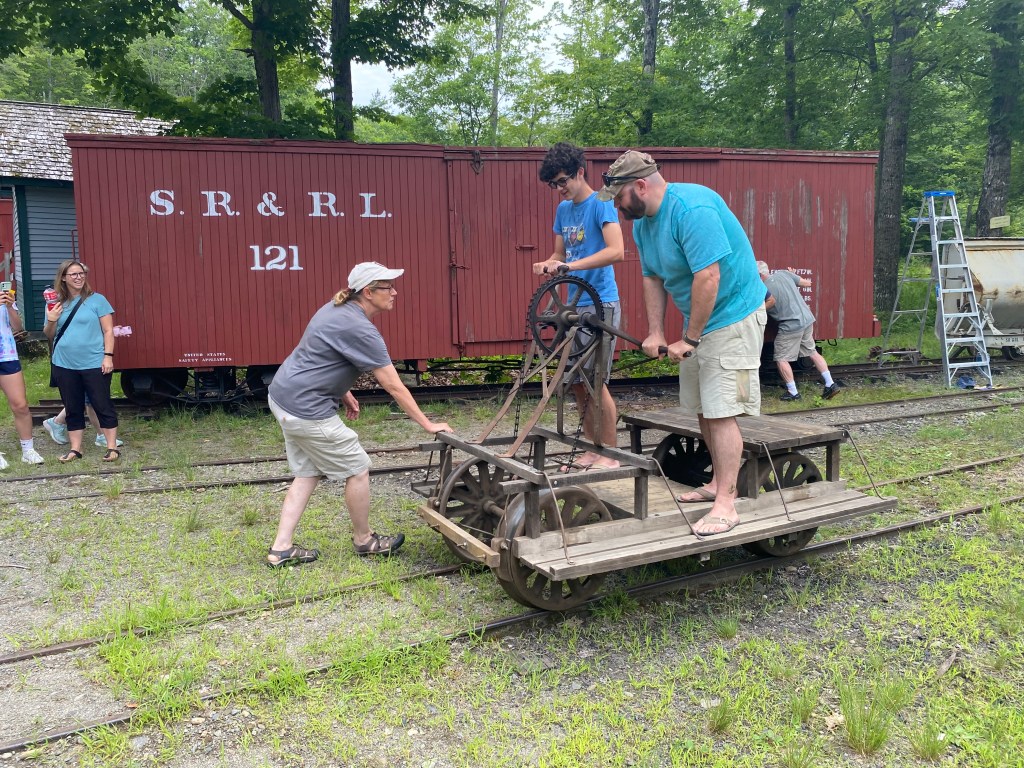

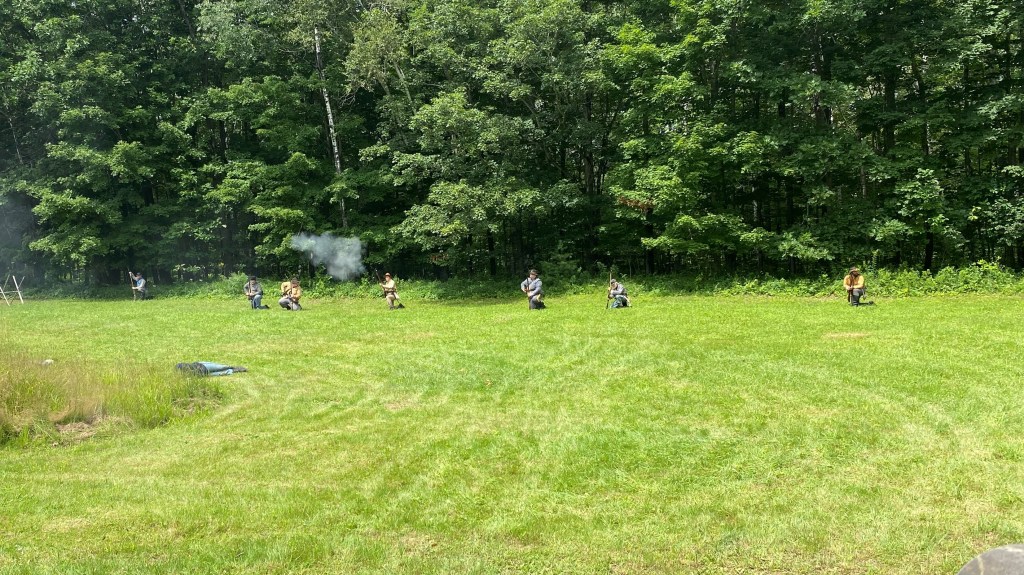

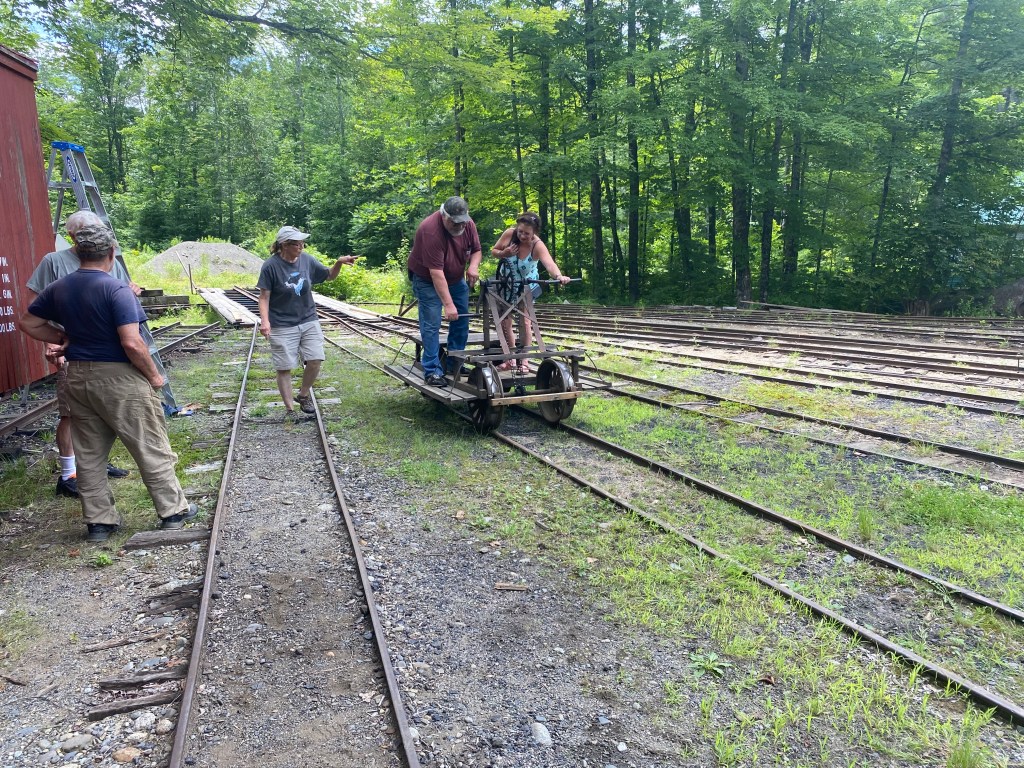


Comments are no longer available on this story